The Fort
bij Rijnauwen
Background
This is one of a series of forts built around 1869 to defend Utrecht from an attack from the east. They were substantial emplacements but this one is by far the biggest (at 77 acres, more than three times the size of St. Stephen's Green in Dublin). It is maintained by the Netherlands Forestry Commission and can be viewed by the public in the course of a two and a half hour guided tour. The forts never served their original purpose. Some use was made of them in WWI but in WWII Rijnauwen served as a barracks, magazine and execution ground for the occupying Nazis.
The Tour
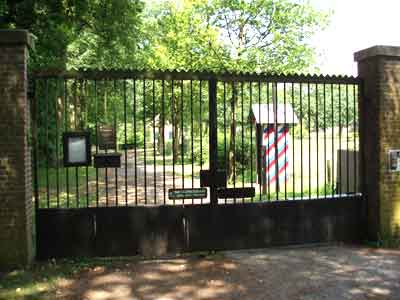
The area is normally closed as it is now part of a nature reserve. There is one guided tour on each Saturday and Sunday and if you are ever in the area be sure to catch it.
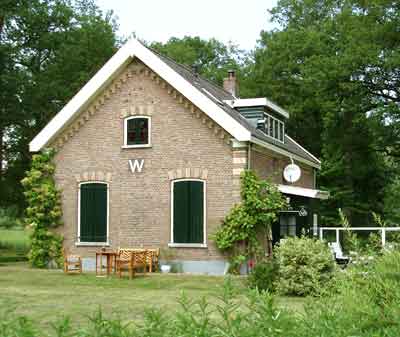
This is the park warden's house near the entrance.
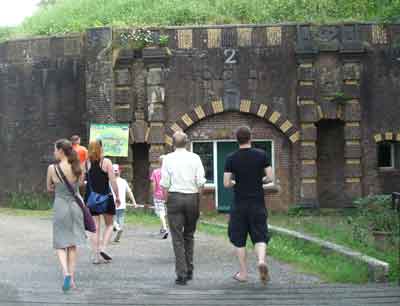
First encounter with the Fort on the southern side.
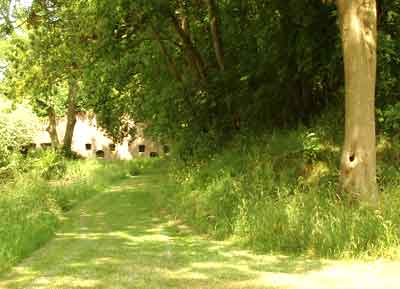
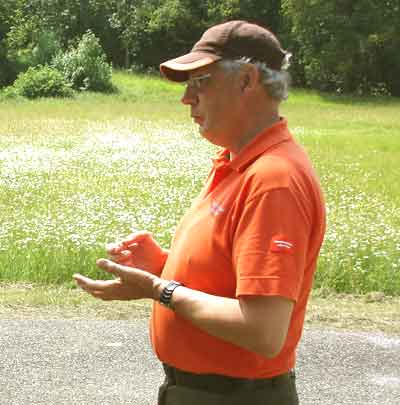
Elko Knobbe was our guide for the day. And a very good guide he was; knew it all and very enthusiastic. Elko does this as a volunteer.
The Memorial
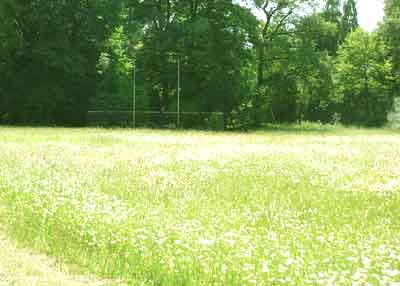
When the Fort was occupied by the Nazis during WWII, it is estimated that some 400 members of the Dutch and Belgian resistance were brought here and executed on this spot. Only some 56 of these victims have been identified and there is a small memorial behind the railings at the trees (above) and a bell and belfry across the path (see below).
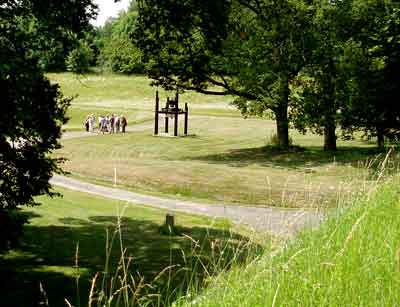
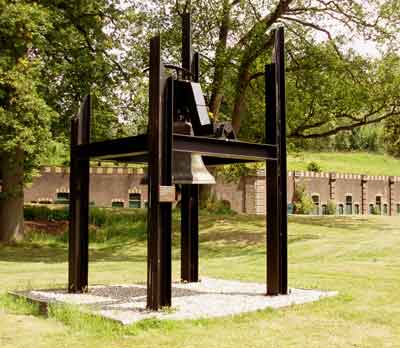
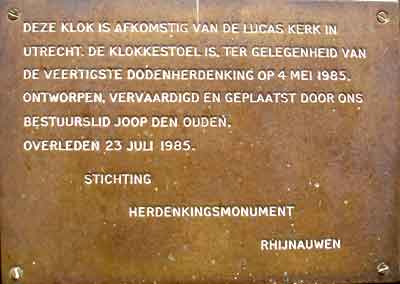
"This bell is from the Lucas church in Utrecht. The belfry, on the occasion of the fortieth Remembrance Day on May 4, 1985, designed, manufactured and installed by our board member Joop den Ouden. Deceased July 23, 1985. Memorial Foundation Rhijnauwen." [Google Translation of the inscription.]
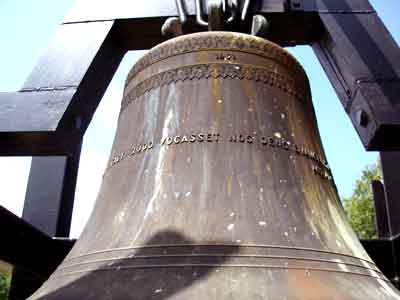
The Slideshow
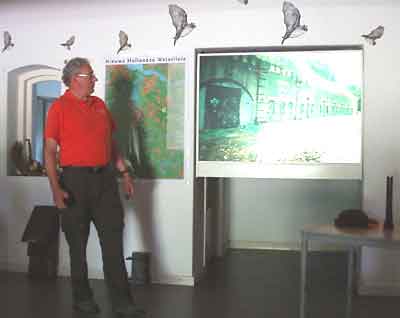
Elko took us through the mechanics of the fort at the beginning of the tour with a very informative slideshow. Note the illustrations of bats on the wall.
Inside Flankbattery 4
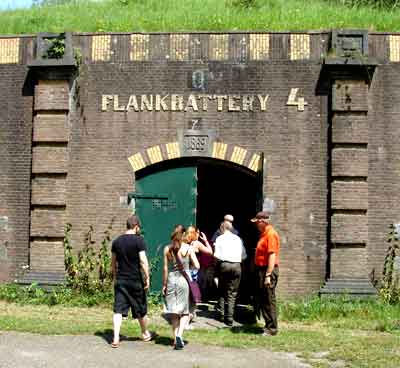
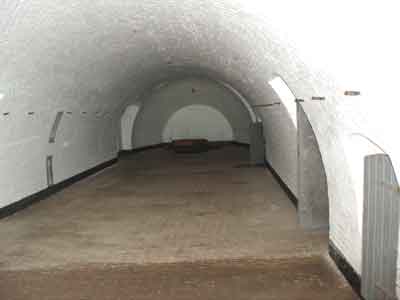
The Water Supply & Storage
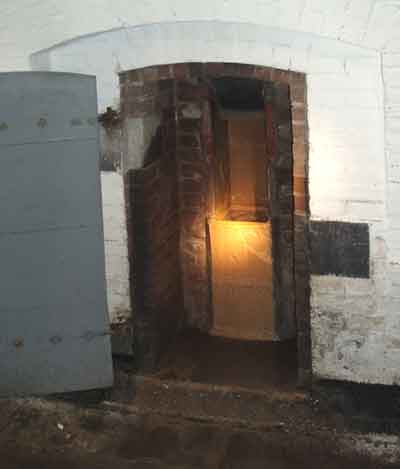
The authorities were well aware of the importance of having an independent supply of drinking water in the event of a siege. The roof areas of the structures were carefully set with layers of clay (to retain the rain water) and sand and cloth (to filter it). It was then piped to mini-wells in presses in the walls of the structure (above), for immediate access, and to underground storage containers (below) for longer term use.
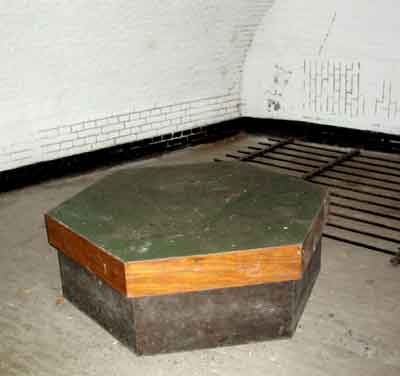
The authorities were so confident of the quality of the water collected in this way that they provided disposable plastic beakers so that visitors could sample it. I did and it was beautiful water, clear and refreshing.
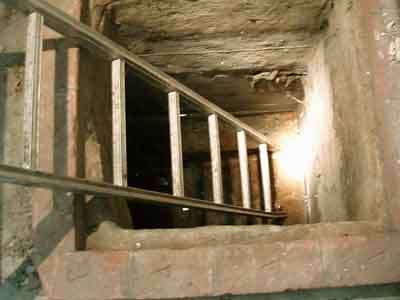
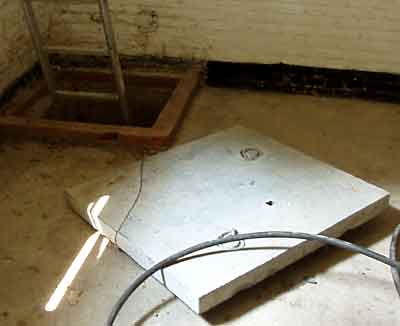
Refectory
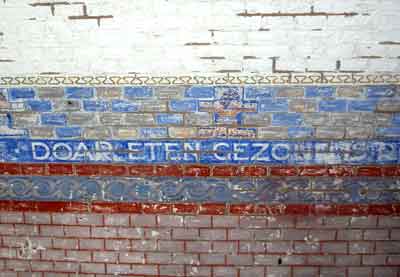
Life could get boring in the barracks and the troops often took to painting the walls with slogans or graphics. The fragment above is from a slogan that suggests you eat the food while you have it.
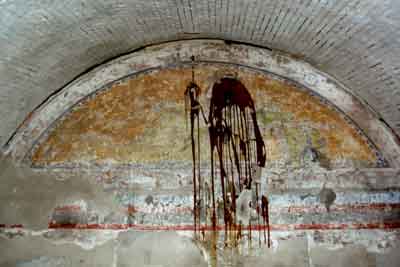
The mural above, now overpainted with gilt and seriously mutilated, was reputed to have shown a naked woman in its day. Bring on the bromide.
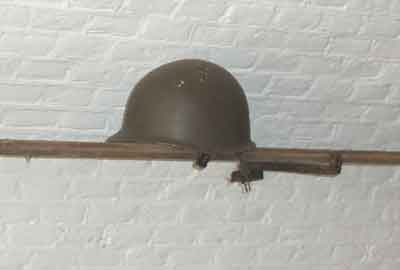
One of the few pieces of metal left in the complex. Almost all the metal fittings were sold off over the years.
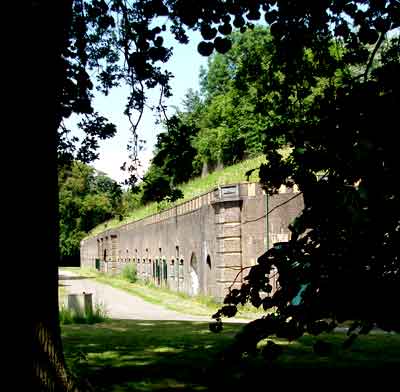
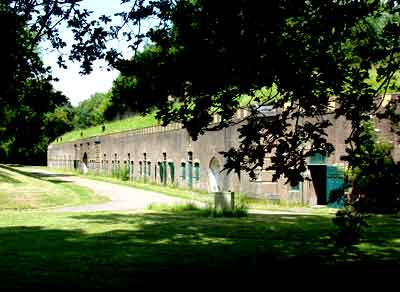
Subsidence
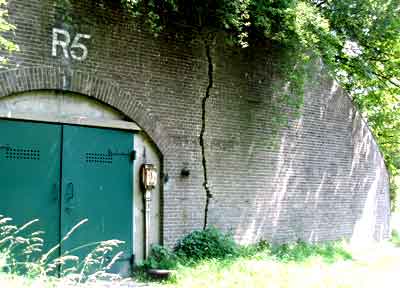
I have commented below on the damage caused by the Canadians at the end ot WWII, but this crack is due to subsidence. Inadequate attention was paid to the ground and its suitability as a foundation for the structure. Nature eventually had her revenge, as she does.
Floodable Area
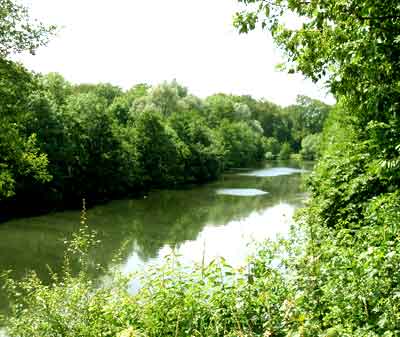
Part of the defence plan was to flood the perimeter of the fort to a depth which would (i) impede the advancing enemy and its artillery, but (ii) not be deep enough to support assault craft. As it would have taken 28 days to implement the full flood plan along the whole of the waterline, there were periods when it was half-flooded to speed up a full response.
Ammunition Store
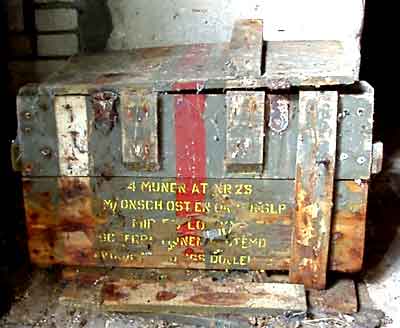
This is the only sign of ammunition I saw in the course of the tour. Had the box been metal it would no doubt have been flogged off long ago.
Gun Emplacement
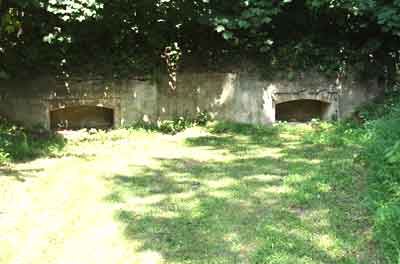
The view here is to the east. Canon were mounted in the flat space, projecting over the wall and away from the viewer, while ammunition was stored in two recesses.
"Portable" Bunker
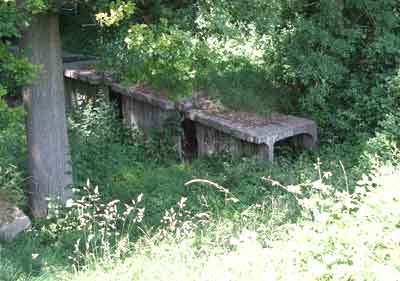
These were additional bunkers, added at a later stage, to give increased protection from attacking fire.
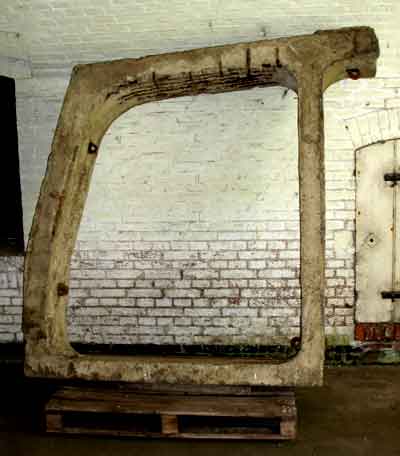
This "spare" spar of a "portable" bunker gives an idea of their size.
Dormitory
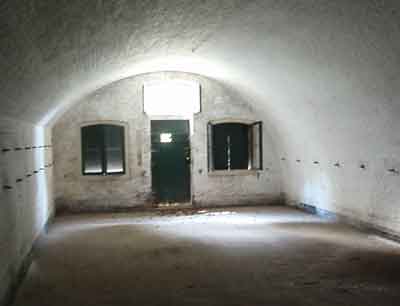
The dormitories had bunk beds at ground and upper level. You can see the mounts for the upper level bunks in the wall.
The Caponni�re
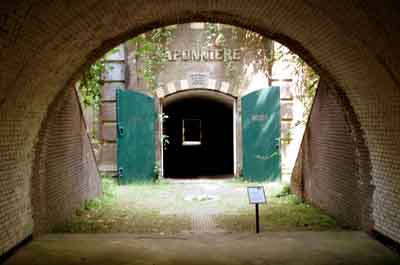
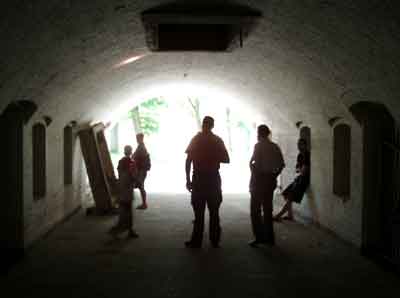
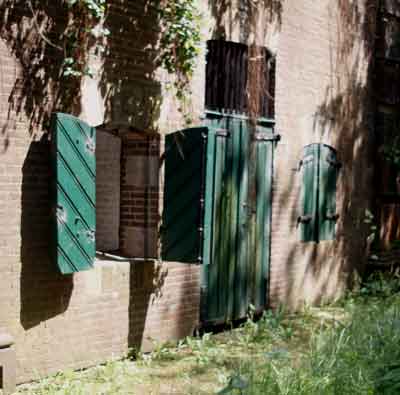
Original wooden doors and shutters.
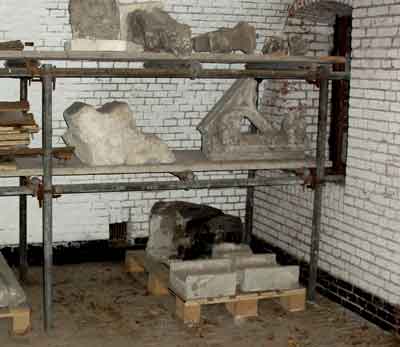
Part of the structure has been rented out to our equivalent of the Board of Works for storage of valuable monument fragments. This area has been fitted with air conditioning and is not accessible to the public.
Canadian Friendly Fire WWII
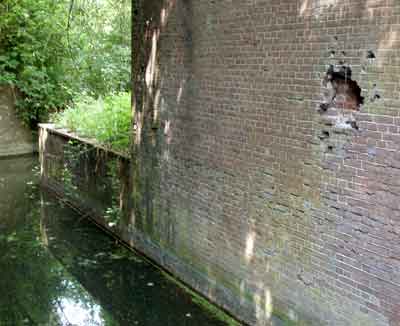
At the end of WWII part of the structure was occupied by the Canadians. Bored out of their trees they took to the ammo and explosives like ducks to water and amused themselves by shooting and blowing up the place. Serious structural cracks and wall damage remain.

Safety Lighting for Ammunition Store
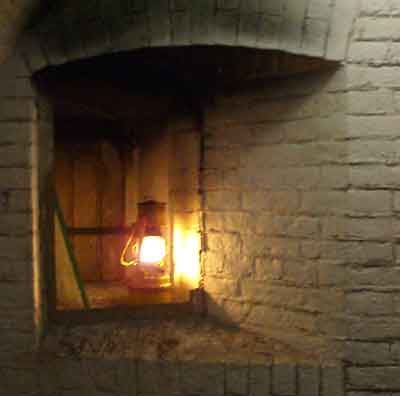
How do you see your way in a dark room full of live ammunition and explosives. The fort has a very simple but sophisticated system, also found in many other defensive structures. A large opening in the wall contains an oil lamp. On the ammunition store side (above) the opening is sealed with very strong glass with the lamp behind it. On the other side (below) it is open to the air and with enhanced ventilation for when the door is closed.
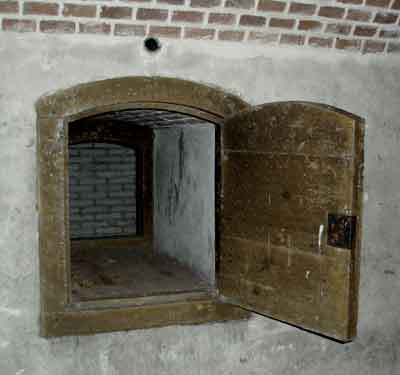
Modified ports for raking fire
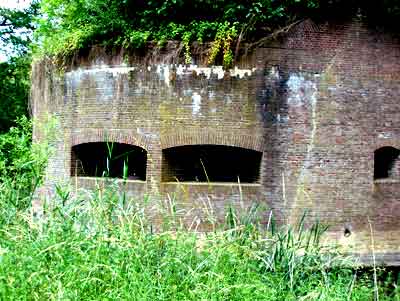
The later advent of machine guns led to the widening of some of the narrow ports to permit raking fire.
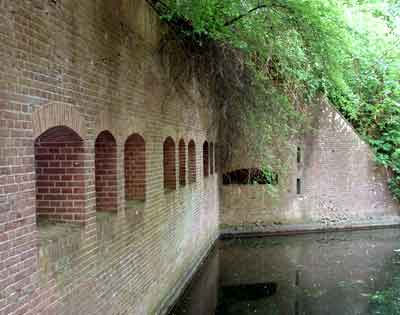
The Main Building
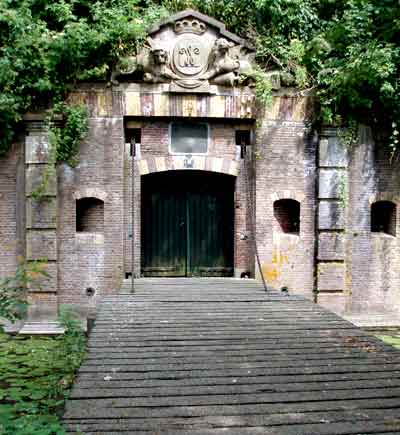
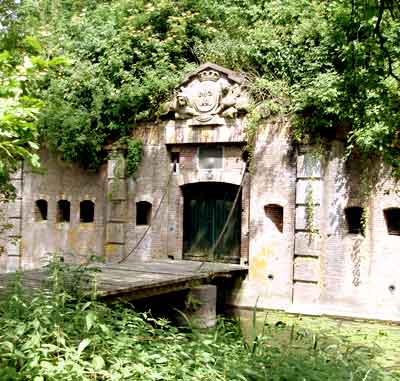
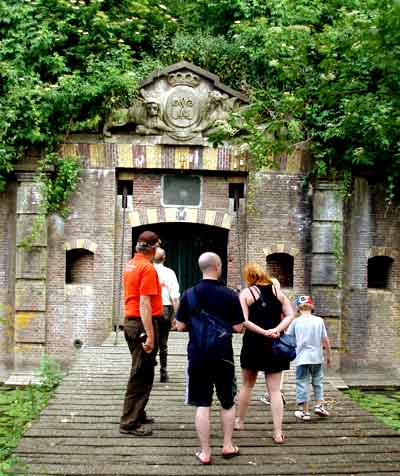
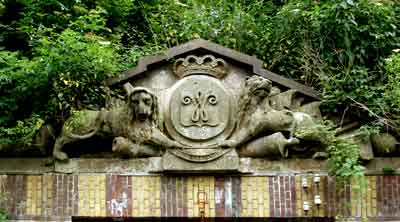
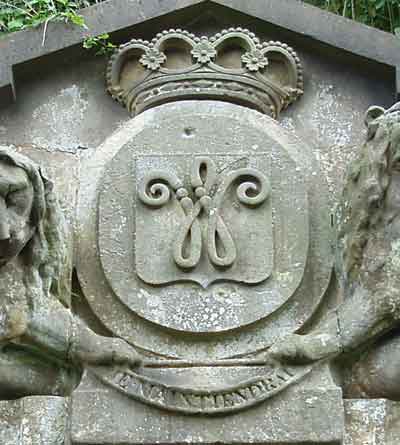
Je maintiendrai is the motto of the House of Orange. It is usually translated as "I will maintain" but our native orangemen prefer the punchier version No Surrender.
Location of Flywheel for Drawbridge
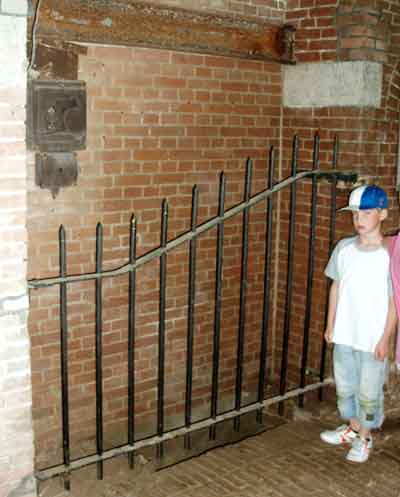
This is where one of the two flywheels for raising and lowering the drawbridge was located. Along with all the other metal fittings, including the cannon but miraculously not the railings, these were sold off over the years.
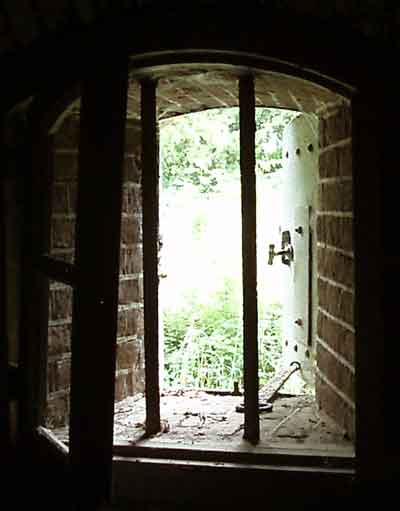
The Kitchen
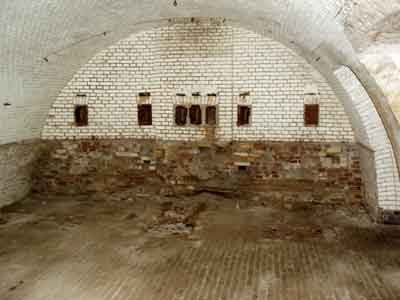
Doesn't much look like a kitchen, but here also all the metal fittings have been sold off.
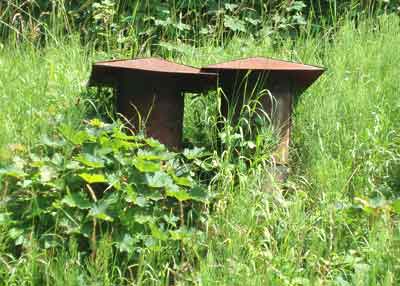
These are the kitchen chimneys above ground.
Bird's Nest
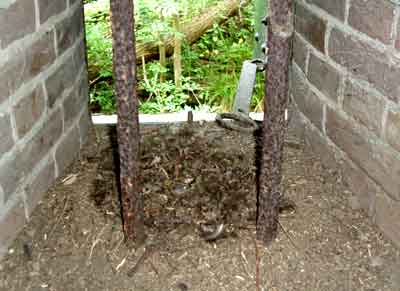
Ceiling Mount for hoisting & placing Cannon
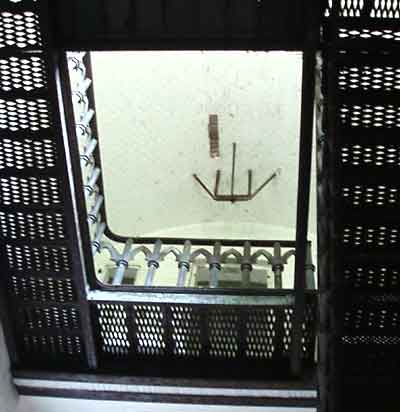
The mount you can see above is actually on the ceiling of the first floor of the main building. The cannon is winched up and then advanced along a guide rail in ceiling. The stair rails and the mount are almost the only remaining metal objects in the complex.
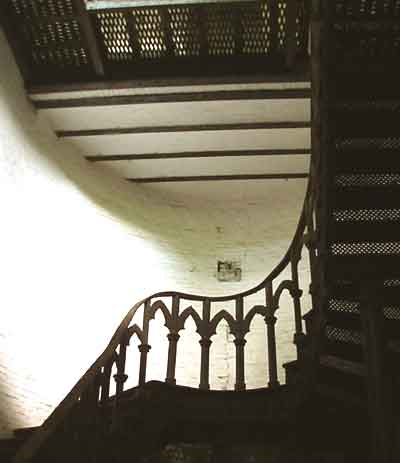
Toilets for Officers
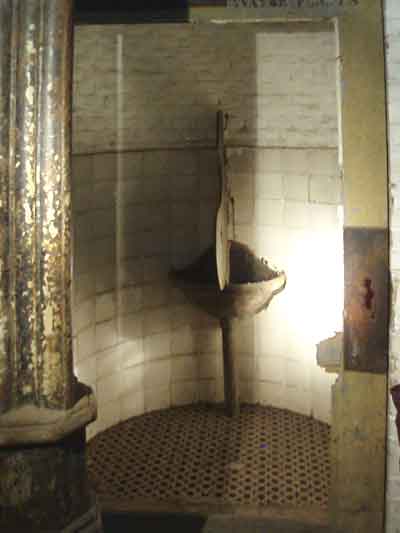
The officers' toilets were luxurious relative to those of the rank and file. They could pee, two at a time (above), and had an individual cabin to do their sitting down business (below).
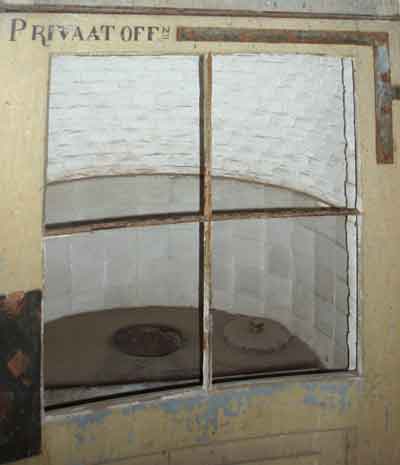
Toilets for Men
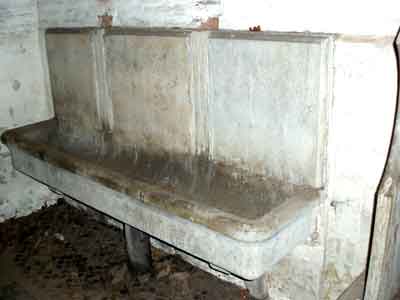
By contrast the men had the equivalent of our male pub urinal (above), and they were subjected to enforced sociability in the course of doing their sitting down business (below).
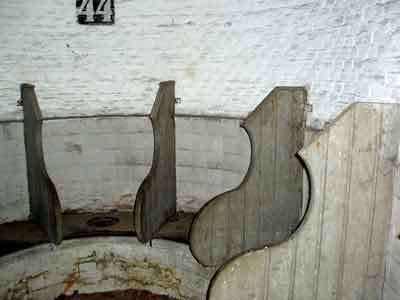
Toilet for Sole Lady
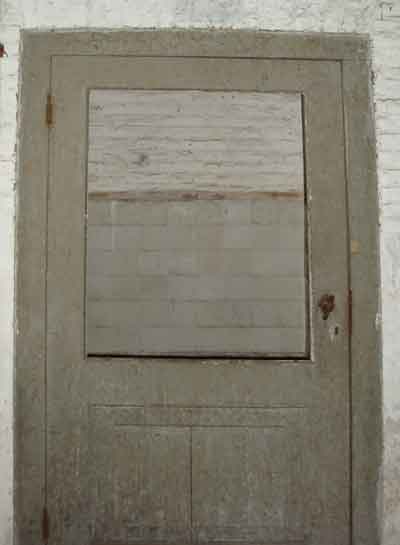
The only lady on site had an individual cabin for all her sit down business. Progressive or what?
Telegraph
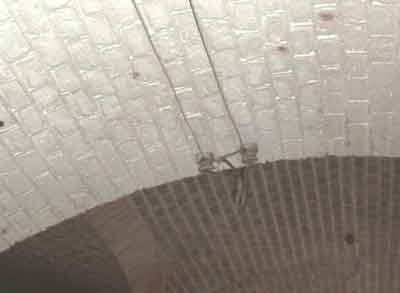
The Bats
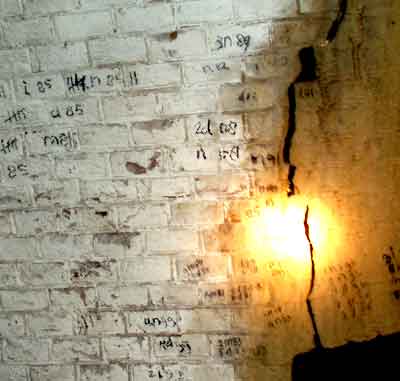
Many varieties of bat hang out in the cracks in Rijnauwen. The University has an ongoing project counting and classifying them. Hence the figures on the walls.
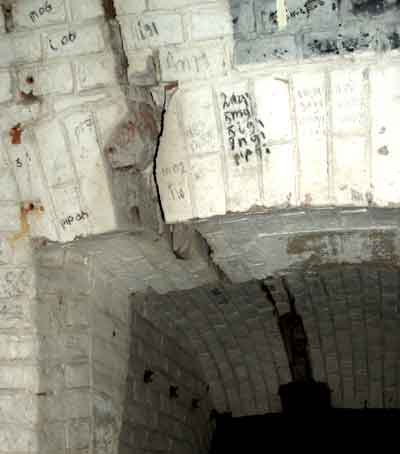
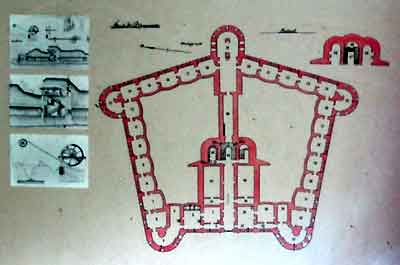
They used to hibernate behind this diagram of the building hanging on the wall. They came in through a crack in the wall behind the diagram. But when the diagram was removed from the wall in order to count the bats, some of them fell off and died (don't ask me how or why).
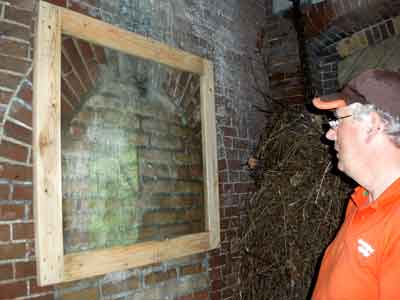
Anyway the solution was to fit a glass panel over the crack and behind the diagram. The bats only got as far as the glass, so when the diagram was removed they could be safely counted through the glass. I love it when it all comes together.